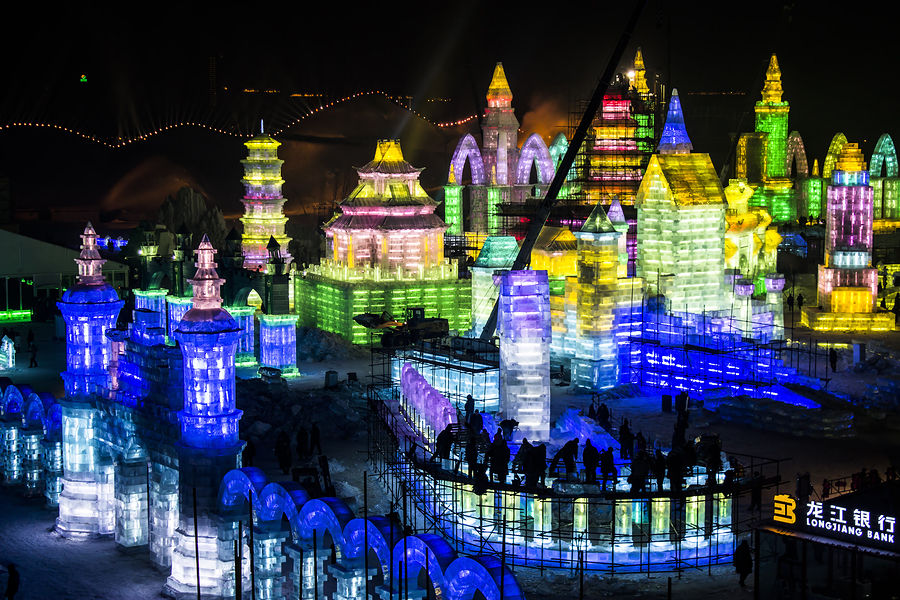 As the capital of China’s Heilongjiang province, Harbin is a key political, economic and cultural centre in Northeast China.Due to its close proximity to Russia, the city serves as the country’s gateway to trade with Russia and hosts the annual China-Russia Expo. Many Russian immigrants made Harbin their home in the early 20th century.
As the capital of China’s Heilongjiang province, Harbin is a key political, economic and cultural centre in Northeast China.Due to its close proximity to Russia, the city serves as the country’s gateway to trade with Russia and hosts the annual China-Russia Expo. Many Russian immigrants made Harbin their home in the early 20th century.
Since the 1950s it has become a hub for mining and steel production. In this article, Rainy Yao from Dezan Shira & Associates explains how this ‘ice city’ is turning out to be one of the fastest growing regions in the country with a unique geographical location and sound transport network.
Economic overview
In 2013, Harbin’s GDP reached CNY 501.08 billion, up 8.9 per cent from 2012. The city’s primary industry contributed CNY 59.26 billion of its total GDP, and its secondary industry CNY 174.39 billion. With CNY 267.43 billion, the service sector accounted for more than 52 per cent of the economy. The statistics for 2014 have not yet been released but during a meeting in January 2015, the Harbin Government was able to say that the city’s GDP has been growing at a stable rate.
Harbin is home to some major manufacturing industries and is a key industrial base in China. However, it is arguably more important as a shopping and tourism centre. The city is well known for the annual Ice Festival. Tourism brought in CNY 66.85 billion (20.6 per cent growth) in 2013, with close to 55.5 million foreign and Chinese tourists visiting the city.
Agriculture plays a small but an important role in Harbin’s economy. The soil around the city is rich in nutrients and is used mainly to grow rice.
Transportation
Harbin’s strong infrastructure and transport networks see it serve as the transportation hub of Heilongjiang Province, which borders Russia to the north.
- Rail: Harbin is one of the largest railway hubs in Northeast China, second only to Shenyang, Liaoning. Currently, 138 trains terminate in or pass through Harbin daily, with trains available to major cities such as Beijing, Shanghai and Guangzhou.
- Air: The Harbin Taiping International Airport offers international flights to Hong Kong, the United States, Canada, Russia, South Korea, Japan, Singapore and Malaysia, as well as domestic flights throughout China.
- Port: Along the Songhua River, Harbin Harbour is one of the eight inland ports in China and the largest of its type in Northeast China. Harbin port is the only inland open port in China equipped to handle import and export procedures. The harbour has established maritime trade relationships with over 300 ports in more than 160 countries and regions, including direct access to major Russian cities such as Khabarovsk, Chita and Blagoveshchensk.
Development Zones
Harbin’s main development zones include:
Harbin High and New Technology Industrial Development Zone
Established in 1988, the Harbin High and New Technology Industrial Development Zone was approved as national-level development zone in 1991. Enterprises from over 40 countries and regions including Hong Kong, South Korea, Japan and America have invested in the zone. Major industries include electronics, machinery, light industry, medicine and textiles.
Harbin Songbei Economic Development Zone
The Songbei Economic Development Zone was established in 1998, featuring industrial clusters such as electronics assembly and manufacturing, food and beverage processing and modern logistics.
Harbin Limin Development Zone
The Limin Development Zone was created in 1991, covering an area of 24.39 square kilometres. There are seven major industries in the zone: green food, modern medicine, machinery manufacturing, timber processing, education, software and logistics. To date, 335 enterprises have been established in the zone.
China-Russia Expo
The China-Russia Expo was approved and co-organised by the governments of China and Russia, upgraded from the China Harbin International Economic and Trade Fair which has been held for 24 consecutive years. The Expo has seven professional exhibition areas including ones for foreign countries, China-Russia cooperation projects, construction materials, agriculture and organic food, machinery and electric products, the culture industry and furniture. The exhibition provides services such as consultation, matchmaking and advertising. Enterprises looking to participate in the exhibition can register online through the official website, http://www.china-russiaexpo.org/.
Investment Opportunities
The Harbin Government released the Circular on Further Supporting the Development of Small and Medium-sized Enterprises in 2014. The Circular allows multiple entities to list the same registered address on their respective business licences, which is prohibited in most parts of China. Enterprises establishing laboratory or research centre for research and development (R&D) purposes may be granted a subsidy of up to CNY 300,000. If an enterprise whose trademark is recognised by the Chinese Government as a ‘well-known trademark’ it may be awarded CNY 500,000 by the city government. Meanwhile, enterprises who register a foreign trademark may receive a subsidy of no more than CNY 50,000.
Enterprises are encouraged to use e-commerce to expand their business. For enterprises that use an e-commerce platform for selling online for the first time, the government may subsidise the e-commerce platform fees.
Dezan Shira & Associates is a specialist foreign direct investment practice, providing corporate establishment, business advisory, tax advisory and compliance, accounting, payroll, due diligence and financial review services to multinationals investing in emerging Asia. Since its establishment in 1992, the firm has grown into one of Asia’s most versatile full-service consultancies with operational offices across China, Hong Kong, India, Singapore and Vietnam as well as liaison offices in Italy and the United States.
For further details or to contact the firm, please email china@dezshira.com or visit www.dezshira.com.


Recent Comments